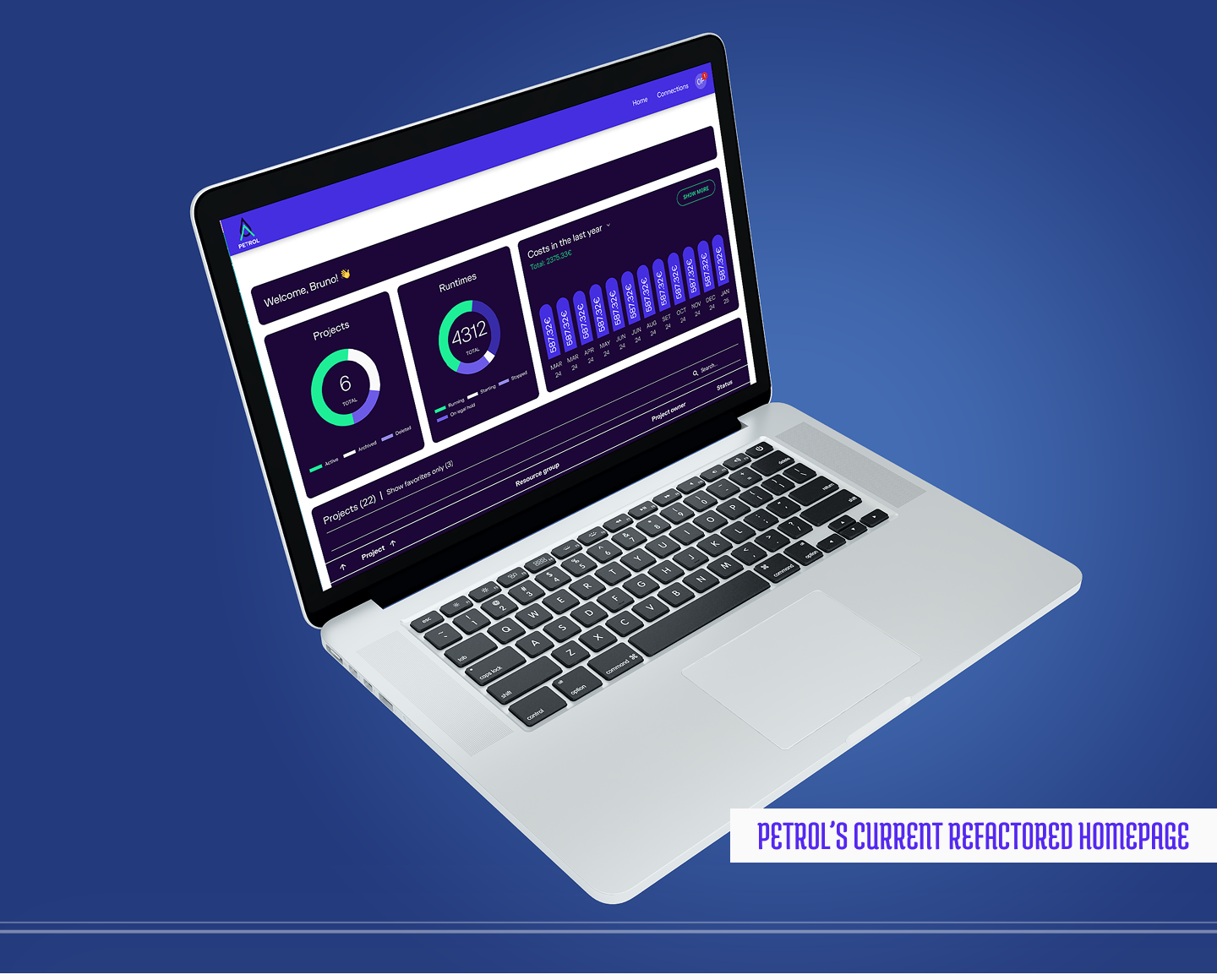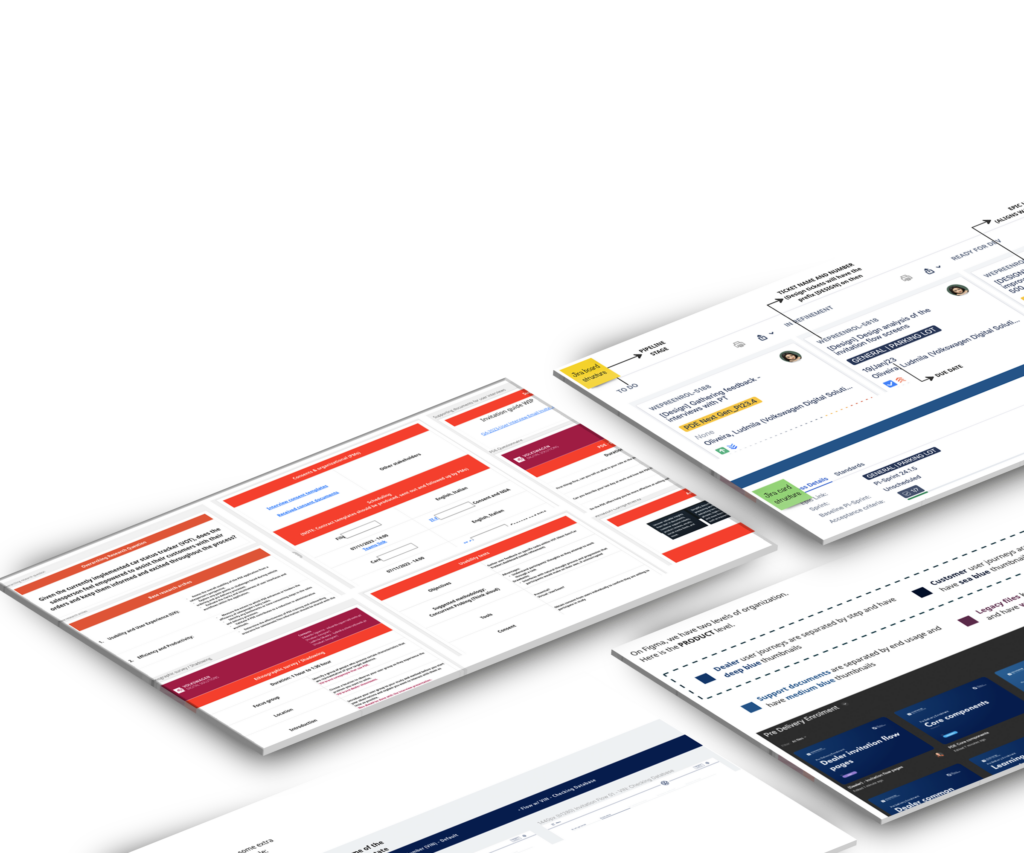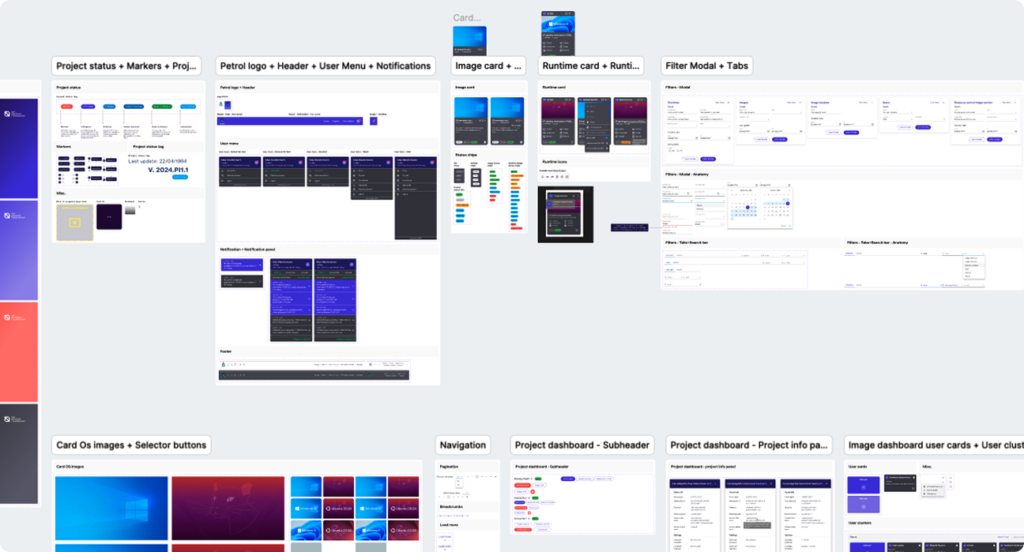CASE STUDY
Petrol
A long-term design strategy focused on expanding the user base of VW’s virtual machine tool
UX Research
Design Strategy
Design Audits
Design Leadership
Backlog Management
UX Refinements
Business Roadmapping
Usability Testing
Visual Design

Context
Petrol was initiated by a team of German developers aiming to comply with Volkswagen’s security guidelines for cloud-based virtual machines. Unlike market alternatives, Petrol offers a more user-friendly interface while keeping critical data within the company.
Client


Role
Senior product designer – January 2024 / Present
Services
Research & discovery, information architecture, wireframing, user flows, UI/UX design, visual design, prototyping, product management, business roadmapping, agile coaching, mentorship for junior designers
Team
A multidisciplinary team in Portugal, including full-stack developers, site reliability engineers, and myself as a product designer, collaborating with a product owner and agile enabler based in Germany.
Tools
Figma, Figjam, Miro, Dovetail, Userzoom, Jira, Confluence
Challenges
Lack of direction in design
led to UI inconsistencies
Convoluted UX
and navigation
Unclear prioritization
and backlog issues
hurting team morale
Objectives
Identify key
UX/UI issues
Propose and prioritise fixes
and enhancements
Engage team members
on important
product decisions
Solution
Current key results
Screens and user flows refactored
Reduced platform navigation time
Increased
sprint velocity
Boost in team office attendance
Background
Obstacles
Petrol was ideated as a layer of abstraction over Azure’s virtual machine tools to make complex operations more accessible, particularly for users who found Azure’s interface unintuitive.
Petrol gained traction as it aimed to solve the need for a compliant, user-friendly way for non-technical managers to manage access and resources.
However, despite benchmarking Azure’s workflows, Petrol’s lack of cohesive design direction failed to deliver the intended simplicity. Many users returned to Azure, as Petrol did not provide the ease of use they needed.
Why they sought my expertise
The project’s scalability was severely impacted by overly complex navigation patterns that frustrated users, coupled with challenges in prioritising new features and an absence of comprehensive design documentation to guide development efforts.
the team working on Petrol was grappling with low morale and a sense of demotivation. This stemmed from a lack of clear direction and alignment, which left many feeling disconnected from the broader vision of the project
Insights and opportunities
During these interviews, my colleagues in Lisbon highlighted several issues, including the need for more team-building activities, language barriers with the German team, and concerns about the application of Agile methodologies and software deployment best practices.
In parallel, I was tasked with assessing the design maturity of the stakeholders, product owner, and developers on the German side of the project, while also supervising the education and professional development of their design intern.

Mitigation plan
Roadmapping
Initiatives were scheduled by quarter as part of our design and business strategy, with timelines shared with the team, management, and stakeholders.
Improving UX
● Refactored the handover Figma files to industry standards, organising sections by user journey stage to simplify Jira linking. Using a Figma plugin, I quickly extracted screens directly from the browser.
● Reviewed the code architecture with developers, prioritising elements for refactoring and enhancing critical flows, such as VM creation. We standardised navigation, reorganised alerts, and added loading animations for better feedback.

Design advocating
Building Community
Petrol as a learning experience
I used Petrol as a training platform for junior team members, prioritising their career growth. To boost my colleagues’ work maturity, I launched a visual guide that centralised crucial information, such as file naming conventions, folder organisation, Jira task ticket standards, and a design thesaurus.
Thank you for reading!
I hope you found this project insightful. If you’d like to discuss it further or explore other topics, feel free to reach out.














